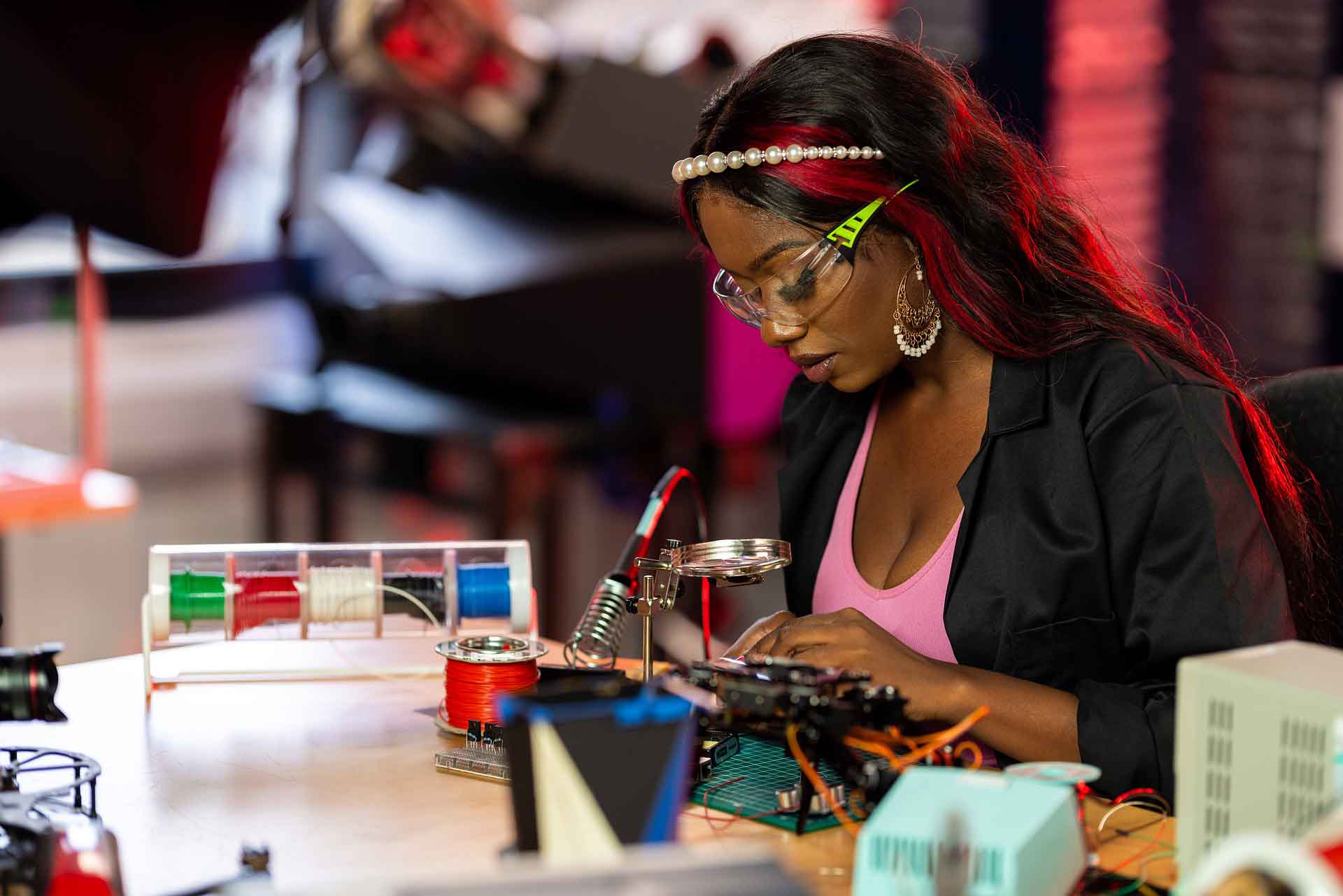
To deliver the change needed in the developing world, a transformative leader needs to have a vision of a reimagined future and the will to develop systems or infrastructure that consolidate their socially just policies to ensure long-term benefits to the people. To be truly transformative, these policies must be systemised. Krish Chetty examines how blockchain technologies can be used to achieve this.
Many transformative leaders fail to achieve meaningful change, as our political, economic and social systems are too restrictive. For example, informal traders desperately need microfinancing services, but current financial systems are exclusionary and unable to offer affordable loans that cater to their needs. The developing world is desperate for new political, economic and social systems supported by relevant information systems that promote inclusion and fair competition, replacing systems that protect political and economic power brokers and intermediaries. Blockchain technology could be the solution that a transformative leader uses to realise their vision of social justice.
Ultimately, a blockchain system is just a tool. To wield this tool, we must understand what is broken, and how it could be fixed using the tool, and have the skill to use it. The challenge is that blockchain and how it could be helpful is not always understood.
A blockchain comprises multiple ‘blocks’. The block is simply an encoding of information relevant to a transaction. This block includes details of the sender, the receiver, the amount in question and other information necessary for the transaction.
If we were building a system for land registration, we would store data about the location of the land, the size, dimensions and other details. The block can also integrate coding, which defines the action that should take place when the transaction is sent or received. Not every blockchain has integrated this coding feature, but this design aspect provides the foundations for smart contracts and autonomous systems. Lastly, each block is timestamped, so one knows exactly when the transaction was executed.
To create the blockchain, a series of these blocks are linked together in chronological order. The blockchain maintains a permanent record of transactions that pass through the system. This record of transactions is often described as a ledger of transactions. However, the power of the blockchain is found in its replication of the ledger. Copies of the blockchain can be stored across a network of computers. Each participating computer in the network storing the blockchain ledger is updated as a transaction executes. The system then constantly verifies the accuracy of the ledger on every machine.
Blockchain in simple terms
Blockchain is a technology which enables us to store transactions and other types of information in a digital format. Unlike a typical computer database, information is stored in a ledger format. The database is only appended to and never edited. Each transaction is timestamped to promote traceability. Unlike regular databases, the ledger is replicated and stored on a network of computers. As the ledger is distributed across the network, the term distributed ledger technology is often used to describe a blockchain. Each computer, referred to as a node, constantly verifies the contents of its ledger against every other copy of the ledger stored on the network. A blockchain network can track business information like payments, orders, production processes, etc. Because of how the blocks are stored and verified, the block can’t be changed without changing every copy of the blockchain simultaneously, reducing the risk of fraud or exploitation through hacking. Much of a blockchain’s value lies in its transparent and shared nature and potential to save costs for the user by reducing system intermediaries. The blockchain systematises trust, negating the need for power brokers.
How is the blockchain different?
Current traditional databases are based on a single copy of the truth. There is just one record, and the system users must trust the system’s owner to maintain the system’s accuracy. This centralised trust is a design flaw that persists across every traditional system. The blockchain solves the trust problem, as we no longer need to trust the system owner but instead place our trust in the accuracy of the data. The algorithm to distribute transactions has been proven to be mathematically sound and is an innovative marvel. Almost all traditional systems are based on placing trust in an intermediary or an institution. For instance, investment in developing countries depends strongly on the scoring of rating agencies such as Moody’s. When a country is downgraded to junk status, we must trust that Moody’s is a reputable institution, but the data at the heart of the decision is not transparent or available to all.
The blockchain is just a system, which is neither good nor evil. The system must be configured by an architect and developer who define how it should be applied. It could potentially be used to harm its end users if developed by an unscrupulous actor. However, the inverse is true as well. The transformative leader has the opportunity to wield this tool to enact meaningful, transformative change.
Blockchain’s transformative potential
This transformative change could be enacted by replacing our current systems of privilege. By replacing systems that place trust in an institution or financial and economic power brokers, one can promote greater impartiality in how subscribers participate. Power brokers, unfortunately, have the opportunity to wield their power in ways that drive exclusion.

As a new system, a blockchain could also be built based on principles of social justice that enable fair competition and provide equal opportunities for all subscribers to participate in the economy. For example, South Africa’s renewable energy sector was paralysed by the requirement that the minister of minerals and energy and the National Energy Regulator of South Africa approve the licence of each independent power producer. This policy requirement caused a significant backlog that harmed the industry and introduced delays that have lasted several years. Suppose the process was automated by adopting a system that integrates trust. In that case, the signoff process could be drastically accelerated, unlocking the country’s renewable energy sector and thus transforming society.
Similarly, the global development finance system is broken. It has been found that 94% of funds donated by well-meaning people don’t reach their intended beneficiaries in the developing world. Instead, the system is built to ensure that every stakeholder in the chain gets a slice of the pie. Ultimately, the system is designed to enable the system and not to solve the social problem. A functioning blockchain system that connected donors to beneficiaries could distribute all the funds fairly to all those subscribed. Removing the intermediaries in the transaction chain will dramatically improve the lives of the system beneficiaries. These changes are built on the centring of trust in the blockchain design.
Another use case relates to reimagining our governance and citizen participation systems. It is possible to decentralise decision making using a blockchain system that promotes collaborative decision making. Blockchain systems could give all citizens a voice. Citizens could directly propose policy changes on which the community could vote. If all citizens had access to the blockchain system, it could be used to hold elections securely and at a minimal cost. Such applications already exist in smart cities in Estonia and Singapore.
Implications for transformation
While these ideas sound promising, they are premised on a world where all people have permanent high-speed internet access. Therefore, addressing the internet access challenge is a central developmental priority. Changing the system might also be met with extreme resistance, especially since it is designed to benefit a few. Those few are the minority but also the powerful. The transformative leader must recognise that our current systems are broken and must be replaced to implement meaningful change. The critical point for transformative leaders to consider is longevity. How long will your socially-just policy last in a world where immoral actors are looking for any opportunity to change things back to how they were? Meaningful, transformative change must be supported by a change in the system. Blockchain can be the means to that end.
Author: Krish Chetty, research manager in the HSRC’s Inclusive Economic Development research division


